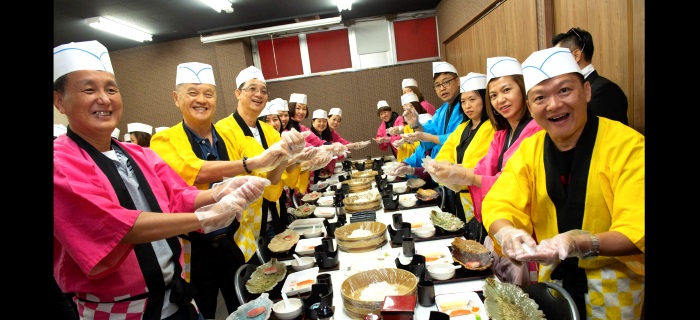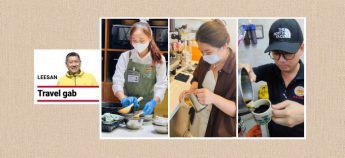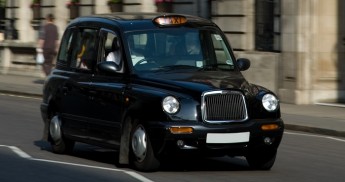A Gastronomical Journey — by Leesan
Has Malaysia been successful in promoting our food overseas?
When travelling to a new destination, always eat what the locals cat.

Celebrity food critic Chua Lam’s Gourmet Tour: a feast of learning journey with the master. Photo: Apple Vacations
When we travel, especially to new places, it is a feast for the senses. These days, tourists are also feasting more and discovering unique cuisines a destination has to offer.
That was the case when I visited South America recently. With my tour group of 15 people, we went to Lima, Peru, and ate in Maido, which was named Latin America’s best restaurant of 2018 on the World’s 50 Best Restaurants list. We were really lucky to get a table there as you need to book at least a month ahead and be prepared to cough up at least US$202 (RM831) per person to dine there.
Maido is famous for its Nikkei cuisine which is basically Japanese-style cooking with Peruvian ingredients. That night we had a nine-course omakase dinner, plus three extras. Omakase means that the selection of dishes is left for the chef to decide.
Fortunately, our chef’s choices were excellent and we had an amazing experience that left us happily satiated. One of the more memorable dishes was fried guinea pig! This may be a strange thing for us to eat but it is a popular dish in Latin America.

Guinea pig, popular daily meat for Latin American; Maido makes it in fine dine table. Photo: Apple Vacations
On a previous trip, my group and I made a detour to Bangkok while on our way home from visiting Lake Baikal in Russia. We wanted to check out some fine dining options, and were lucky to get a table at The Nahm, a restaurant that is also on the World’s 50 Best Restaurants list for 2018.
Besides eating at top-billed restaurants, the women in our group also attended a four-hour Thai cooking class which they found to be great fun and informative.
This reminds me of a few other tour groups I’ve led where the members opted to learn how to make sushi in Kyoto, Japan, and kimchi in South Korea.
I find that more tourists these days are asking for better food experiences to be included in their tour schedules. They want to eat well and discover local cuisines, as well as to learn about the ingredients and cooking methods.
This makes me happy because combining gastronomical experiences with travel is always a winning formula. Eating good food never fails to put people in a happy mood, except perhaps when you start to worry about gaining weight!
This growing interest, in a way, forces tour agencies to do more research on local cuisines and where to get them, in order to meet their clients’ demands. It’s a far cry from the tours organised in, say, the 1980s when food was seen as a “by-the-way item” and meals would be of the safest type – like chicken and fries – or predictable localised Chinese food for the unadventurous.
To me, one the greatest joys about travelling is the chance to explore and experience new things.
So, apart from learning about local customs and traditions, being able to savour local cuisines is a way to create some of the most wonderful memories of a place.
For example, anyone who joins Hong Kong-based celebrity food critic Chua Lam’s Gourmet Tour in Tokyo would be over the moon at the chance to dine at Ginza Ukai-Tei. The famous restaurant is a Michelin 3-star wagyu teppanyaki house in which Japan’s Prime Minister Shinzo Abe hosted US President Donald Trump in 2017.
Sometimes, even the way food is displayed or presented can be delightful and memorable as it offers a kind of visual treat. At the end of a tour, tourists will understand local delicacies through the art of preparing the dishes.
A culinary masterpiece enhances dining and cultural experiences. Of course, this is not limited to fine dining as Malaysians can attest to just how wonderful hawker/street food is. So too are Taiwan’s night market snacks, Hong Kong’s kopitiam fare, Thailand’s street offerings, Vietnam’s noodle dishes and more.
That’s why I see an increasing number of my clients asking for a combination of fine dining and down-to-Earth “real” local fare. I also see a growing sophistication of palates among Malaysians visiting Europe. Many of them who plan on going to countries such Britain, France, Italy, Spain and Austria, look for itineraries that include visiting wineries or farms to see how the ingredients are grown and harvested.
So what about visitors to our country? How does their food experience measure up?
We take it for granted that they know and love our food but that’s not always the case.
I have been in the travel industry for many years and I still feel that so much more can be done to promote Malaysian food abroad, especially Nyonya cuisine. It is one of the most remarkable and exciting cuisines in the world because it has roots in so many cultures.
There are other Malaysian specialities which we’re proud of that are also products of our multi-cultural society like nasi lemak, bak kut teh, Hokkien mee, ayam percik and satay.
Yet, most tourists only find out about our wonderful food after they’ve arrived in the country. Our neighbours do a much better job in promoting and marketing their food culture – which is very similar to ours – internationally, and even staking their claim on certain dishes that we believe “belong” to us.
Not only that, some countries like Thailand have been brilliant in packaging their traditional foods and snacks like tomyam, green curry and mango sticky rice for export.
It is sad that we do not have a capable organisation which can provide guidance to Malaysian food manufacturers on how to improve the quality and packaging of their products.
I also notice a growing global trend in organic food, and I strongly believe we can develop this part of the food industry too. I have brought visitors from Taiwan, Hong Kong, China, Japan, Korea and Europe who are interested in trying organic Malaysian food to restaurants like Song-Yan in Pahang and they were very happy with their meals.
This shows that we have the talent and produce/ingredients to win over international visitors with fussy palates.
Perhaps our Tourism, Arts and Culture Ministry can work on promoting our food culture on the international platform. I remember a Government-funded initiative launched about 10 years ago in which a string of Jom Makan restaurants in Britain and Japan were opened as a way to promote our cuisine. However, this initiative was deemed a failure – all the restaurants closed down after only a few years of operation.
Is Malaysian food tourism not important enough to be taken seriously? Should the industry not get some much-needed financial boost? The Taiwan Visitors Association, Japan National Tourism Organisation and Korea Tourism Organisation are among the best marketers in food tourism, perhaps we could learn some things from them.
Delicious, authentic food is one of the biggest attractions of any destination because it makes one’s memories a lot sweeter, thus tempting visitors to return for more.
As Ernest Hemingway said, “It is good to have an end to journey toward, but it is the journey that matters in the end.” And how can we not eat and try local delicacies while on a journey?

Tourists enjoying a fun-filled sushi making workshop during their Kyoto trip. Photo: Apple Vacations
Leesan, the founder of Apple Vacations, has travelled to 122 countries, six continents and enjoys sharing his travel stories and insights. He has also authored two books.
全球超过80000家酒店,Apple101助您轻松订房,出行无忧,绝对优惠价。入住期间付款,多数客房可免费取消!













